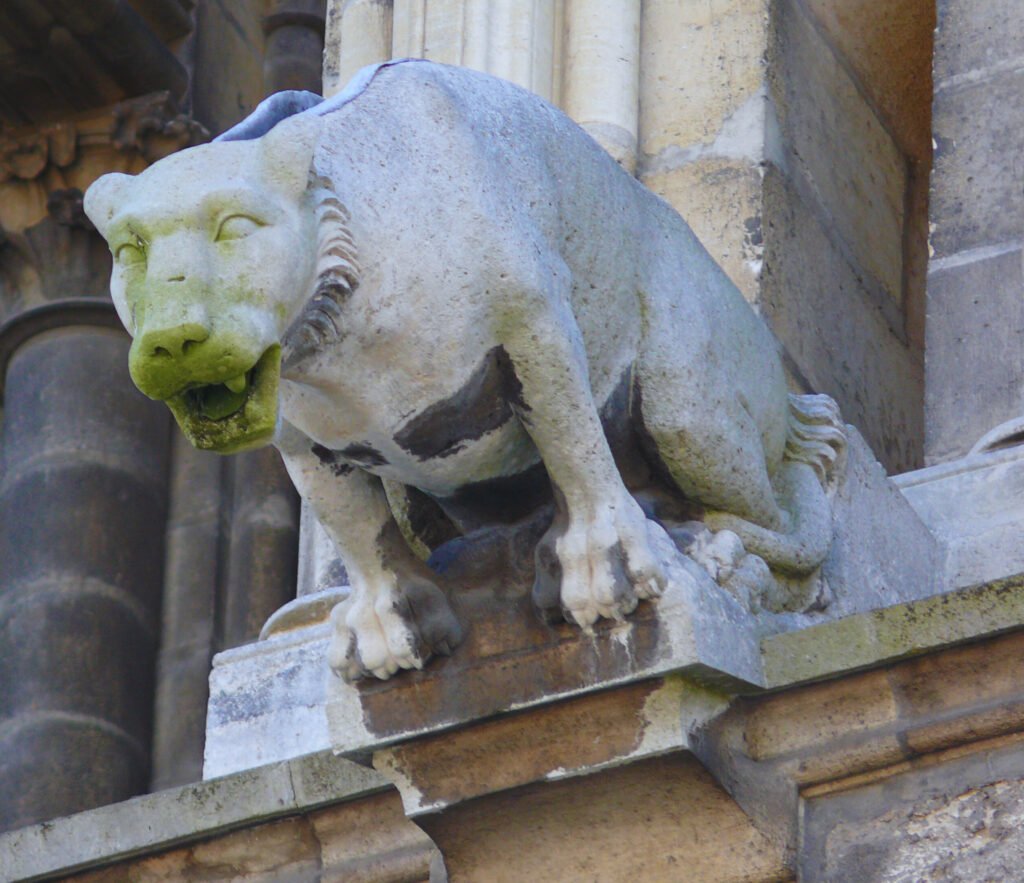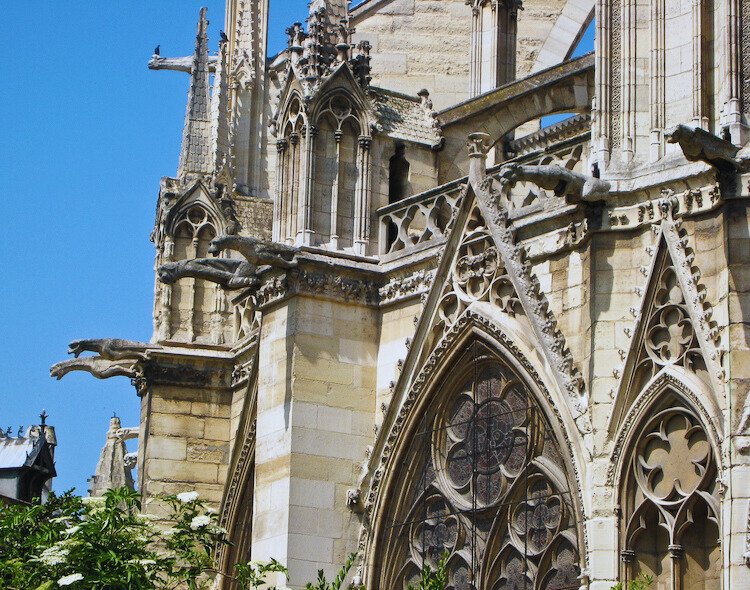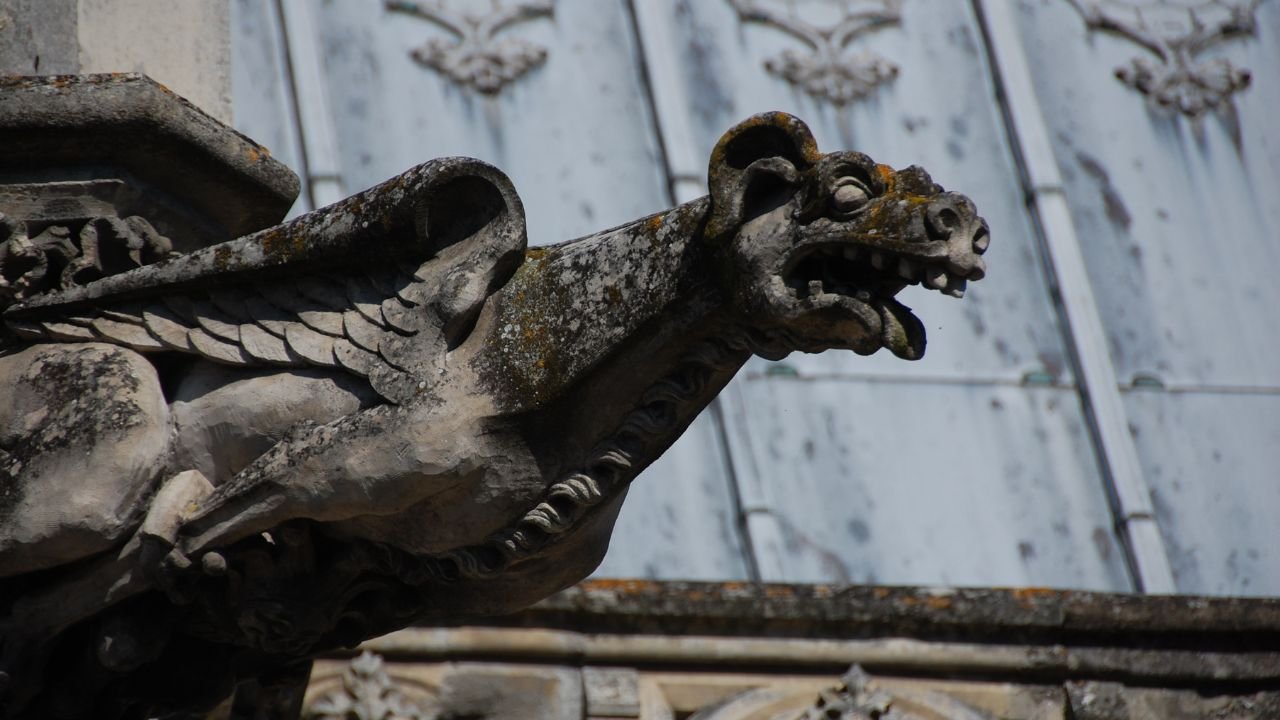Stone gargoyles are exquisite art pieces with a rich symbolic and historical background. These legendary figures have contributed significantly to architecture and culture, from guarding historic structures to enthralling onlookers today. Let’s examine stone gargoyles’ function, background, and historical significance as we delve deeply into their world.

Stone Gargoyles: A Symbol of Protection and Beauty
Grotesque figurine gargoyles, and grotesque stone, stone gargoyles found atop buildings. Historically, they were intended to be both visually pleasing and functional. Some gargoyles are carved into more animal or human-like shapes, yet the most popular representations are of mythological animals or fanciful beasts. They are intrigBecause of their distinctive look, stone gargoyles are examples of mediaeval architecture because of the
What is the Main Purpose of a Gargoyle?
A gargoyle’s main purpose was to drain water. Water was able to pascouldnd out of the carefully crafted hollow channels in these stone figures without causing any harm As a reference The” itself is derived from the French word gargouille, which means throat., about the way water would flow from their lips
Beyond their practical function, Stone Gargoyles frequently served symbolic functions in religious or cultural contexts, acting as guardians for the structures they ornamented. This is especially true of the Stone Gargoyles found in temples, cathedrals, and churches.
Gargoyles in Architecture: A Blend of Function and Art
For a long time, mediaeval architecture has been linked to gargoyles, especially in churches and cathedrals. Because they were supposed to ward off evil spirits, their location at the top of lofty buildings, frequently much above the general population, created a sense of dread. They were unique in Gothic design because of their functional drainage capacities combined with their imposing, monster look.
Gargoyles were significant components of religious and spiritual buildings because, in addition to their artistic and utilitarian functions, they represented the never-ending conflict between good and evil. Throughout history, gargoyles have captivated people due to their unique combination of art and functionality.
Gargoyles on Cathedrals: Spiritual Significance
During the height of Gothic architecture in the 12th century, gargoyles were first seen on cathedrals. Cathedral gargoyles functioned as a moral and spiritual reminder to the congregation in addition to being a practical technique to divert water away from the structure. They were thought to preserve the church’s holiness by fending off demons and evil spirits.
What is the Point of Gargoyles?
Although most people are aware of gargoyles’ eerie and menacing appearance, it is impossible to ignore their deeper meaning. Beyond its utilitarian use, a gargoyle’s “point” was to act as a protector. Gargoyles were seen as protectors in many cultures, either guarding buildings from evil powers or maintaining watch over places of worship like churches.
Thank you for visiting our Website.
What is the Spiritual Purpose of a Gargoyle?
Spiritually speaking, gargoyles stand for the conflict between good and evil. These animals were seen in religious contexts as spiritual guardians for those who worshipped inside the buildings, protecting them from evil spirits. To ward off bad spirits and safeguard the sacred area, the gargoyle’s hideous appearance served as a metaphor for the fight against evil.

What Does the Bible Say About Gargoyles?
Although gargoyles aren’t mentioned in the Bible specifically, the idea of guardianship can be connected to their relevance in religious art. It was thought that gargoyles were protectors, a function that is similar to that of biblical guards like angels. According to certain views, gargoyles’ hideous appearance also represents the conflict between good and evil, a subject that is strongly ingrained in biblical teachings.
Open a free account in Exness.
What is the Main Purpose of a Gargoyle in the Bible?
Protective figures in the Bible are primarily meant to serve as barriers against evil and to guard holy areas. This is consistent with the gargoyles’ function in classical architecture. Although they aren’t mentioned in the Bible specifically, gargoyles could be seen as a metaphor for the fight against evil, much like angels in the Bible.
Why Are Gargoyles on Churches?
Church architecture has a long history of using gargoyles, especially in Gothic cathedrals. For several reasons, they were erected in churches:
- Water drainage: As previously stated, their purpose was to divert rainfall away from the church’s walls.
- Protection from evil: It was thought that gargoyles kept worshippers safe by warding off evil spirits.
- Moral symbolism: People were reminded of the perils of sin and the value of spiritual alertness by the hideous appearance of gargoyles.
Are Gargoyles Evil?
Even though they have a frightening and unsettling aspect, gargoyles are not always bad. Rather, they were designed to act as guardians and protectors, defending structures against evil powers. Instead of representing bad spirits, their gloomy looks were designed to frighten them away. Rather than being agents of evil, gargoyles might be viewed as emblems of the fight against it.
What Do Gargoyles Represent in the Bible?
Guardians are frequently used in the Bible to represent God’s defence against evil. Although biblical texts don’t specifically mention gargoyles, their role as protectors is consistent with ideas of divine protection and the struggle against evil powers.
Gargoyle vs Grotesque: Understanding the Difference
Although the terms “grotesque” and “gargoyle” are frequently used interchangeably, they have a slight distinction. A grotesque is more generally defined as any carved figure, frequently in a fantastical or monstrous form, placed on a building, while a gargoyle is usually a creature with a working water spout. Not all grotesques are gargoyles, but all gargoyles are grotesques.
Gargoyles Mythology: More Than Just Decoration
Gargoyles have been portrayed in mythology as protectors who can ward off malevolent spirits from structures. They are associated with old customs of spirits and guardian deities in certain civilisations, which were thought to have the ability to fend off evil forces. These myths added to the gargoyles’ symbolic significance, making them more than just architectural elements but also significant cultural icons.
The 5 Most Stunning Stone Gargoyles in History
- Notre-Dame Cathedral Gargoyles (Paris, France)
The Notre Dame gargoyles, maybe the most well-known in the world, are elaborate, fanciful structures with symbolic and practical uses. Gothic architecture has come to be associated with their imposing appearance. - Chartres Cathedral Gargoyles (Chartres, France)
Among the best specimens of mediaeval artistry, these gargoyles are a recognisable feature of the Cathedral of Chartres. In addition to being works of art, they have a wealth of historical relevance. - Lincoln Cathedral Gargoyles (Lincoln, England)
The gargoyles here, a magnificent example of British mediaeval architecture, are legendary creatures with exaggerated animal features that relate tales of human foolishness and divine protection. - Salisbury Cathedral Gargoyles (Salisbury, England)
Some of the most intriguing stone gargoyles may be found at Salisbury Cathedral; several of them have strange and fantastical designs that still enthral tourists today. - St. Vitus Cathedral Gargoyles (Prague, Czech Republic)
Prague’s St. Vitus Cathedral has distinctive gargoyles that blend the mystical with the spiritual, frequently including elements from regional folklore.
Conclusion: The Enduring Allure of Stone Gargoyles
Stone gargoyles are much more than just hideous statues that stand atop historic structures. They bring centuries of mystery, symbolism, and history with them. Gargoyles continue to enthral and interest people worldwide, regardless of whether they are perceived as spiritual symbols, protectors, or simply beautiful artwork. The beautiful gargoyles of history serve as enduring memories of a time when it was frequently difficult to distinguish between the spiritual, the mythical, and the utilitarian.
